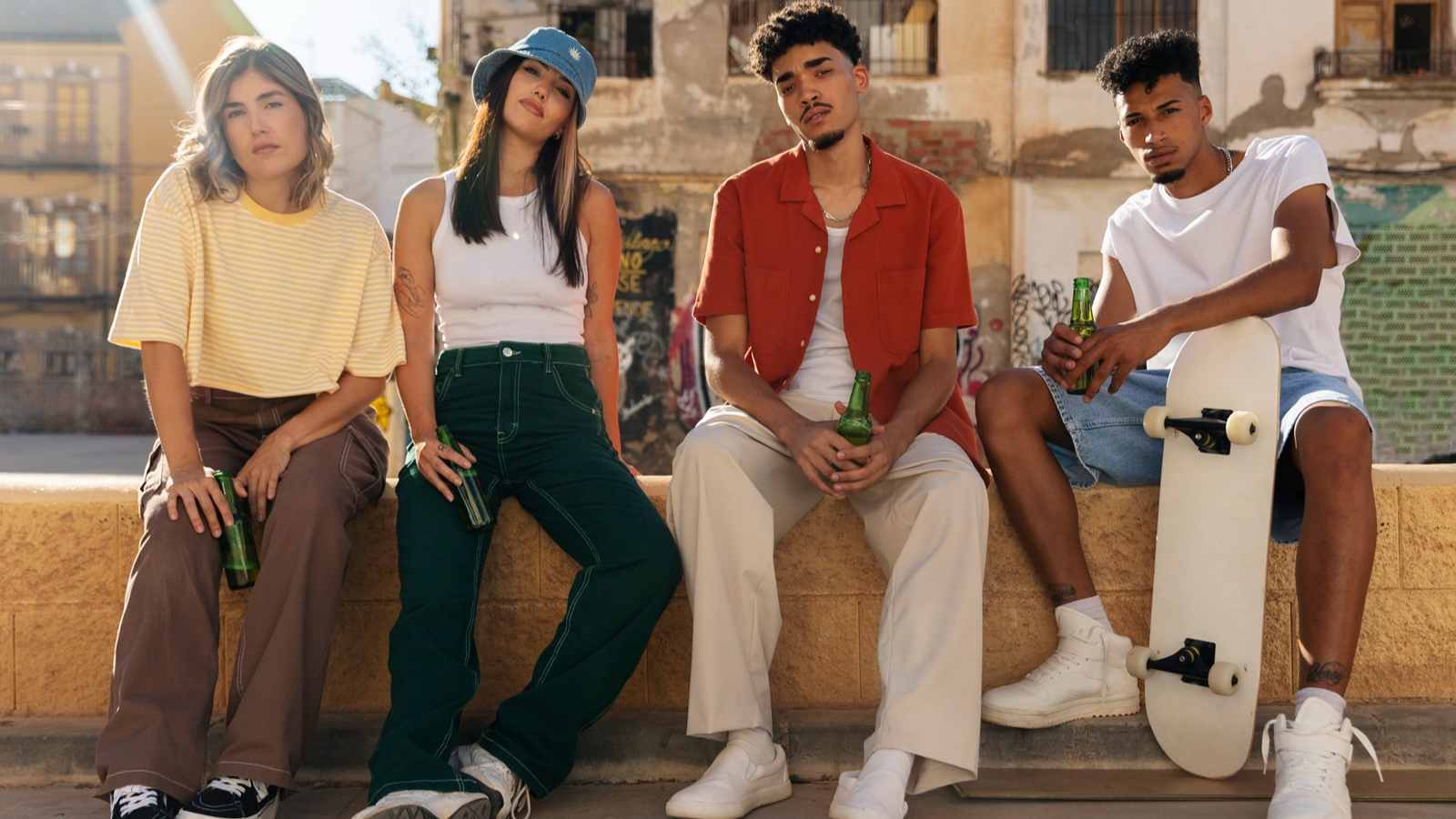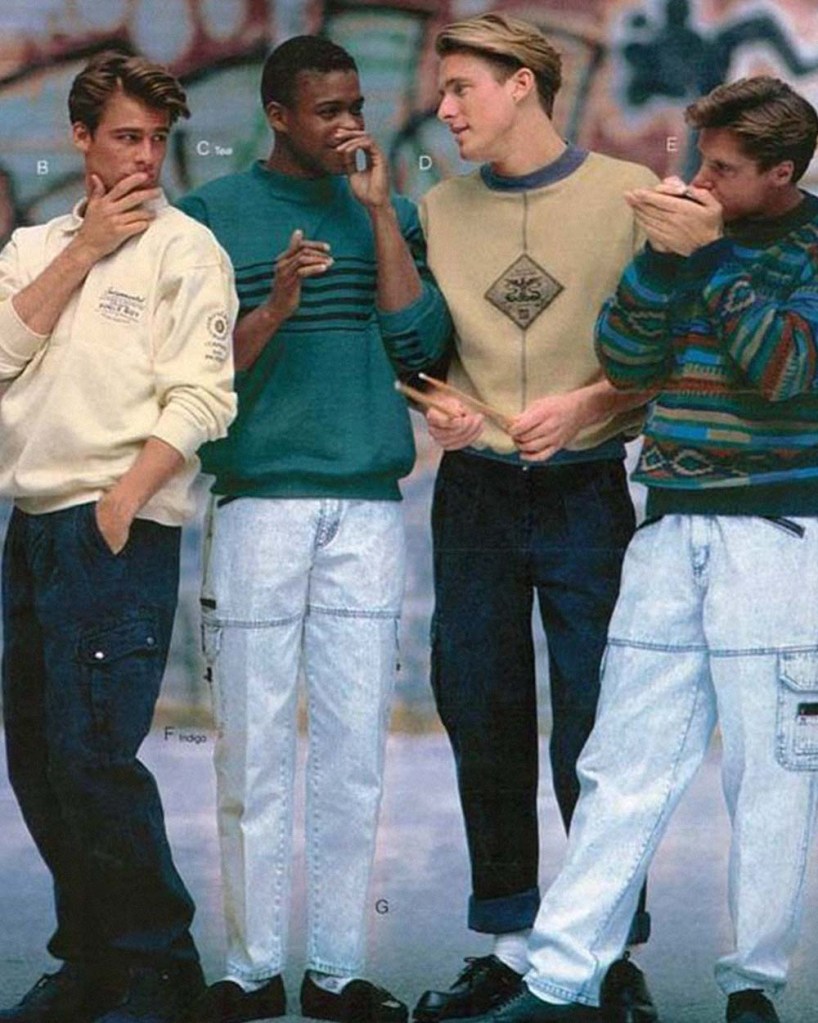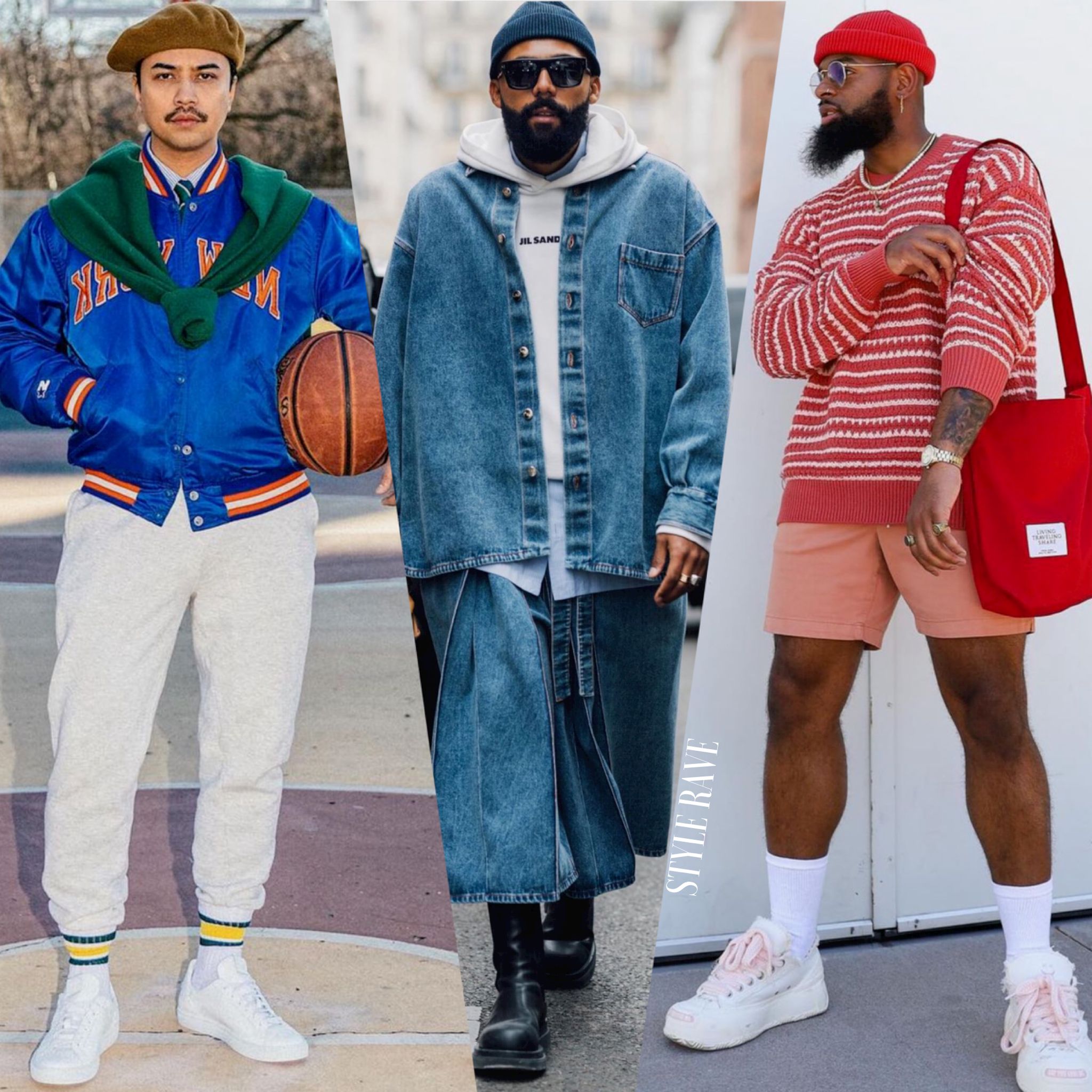

Table of Contents
Introduction
Casual Style – Casual style has undergone significant transformations over the years. What started as a relaxed, informal way of dressing has now become a fashion statement embraced worldwide. The increasing demand for comfort, practicality, and self-expression has contributed to the evolution of casual fashion. In this article, we will explore the history of casual style, its latest trends, the influence of technology, and how it affects our daily lives.
The Evolution of Casual Style

Casual style has become a defining element of modern fashion, evolving from a mere alternative to formal wear into a dominant and influential movement. As fashion trends shift and lifestyles become more relaxed, casual style continues to redefine how people dress for work, leisure, and social interactions. This article explores the history, transformation, and current trends in casual fashion while examining how innovations and cultural influences shape the way we dress today.
The Origins of Casual Style
Casual fashion did not emerge overnight; it was a response to societal shifts, cultural revolutions, and technological advancements. Here’s a look at its origins:
1. The Early 20th Century: Leisurewear Emerges
In the early 1900s, fashion was highly formalized, with strict dress codes dictating attire for different occasions. However, as industrialization progressed, workers and everyday individuals sought more practical clothing. The introduction of leisurewear, such as knitwear and sport-inspired pieces, marked the beginning of a more relaxed approach to fashion.
2. The 1950s and 1960s: The Rise of Denim and Rebellion
The post-war period saw the emergence of denim as a symbol of youth rebellion. Hollywood stars like James Dean and Marlon Brando popularized jeans and T-shirts, making casual clothing more acceptable in mainstream culture. This era also saw the birth of the classic polo shirt and chinos, bridging the gap between casual and smart attire.
3. The 1980s and 1990s: Streetwear and Athleisure Take Over
With the rise of hip-hop culture, skateboarding, and sportswear brands like Nike and Adidas, casual fashion became a global phenomenon. Hoodies, sneakers, and baggy jeans became staple items, reflecting a cultural shift towards comfort and self-expression. The late 1990s also introduced tech-inspired clothing and logo-driven branding, further cementing casualwear’s place in everyday fashion.
The Digital Age and the Transformation of Casual Fashion
The 21st century brought rapid technological advancements and digital culture, influencing how people engage with fashion. The rise of social media, e-commerce, and sustainability movements transformed casualwear into a highly dynamic industry.
1. Fast Fashion vs. Sustainable Fashion
The early 2000s saw the dominance of fast fashion brands like Zara, H&M, and Forever 21, making trendy casual clothing accessible to everyone. However, the environmental impact of mass production led to a growing interest in sustainable fashion. Brands now focus on ethical sourcing, recycled fabrics, and slow fashion principles.
2. The Influence of Social Media and Celebrities
Platforms like Instagram, TikTok, and Pinterest have revolutionized how trends spread. Influencers, fashion bloggers, and celebrities dictate casual fashion trends in real-time, making it easier for consumers to discover and adopt new styles.
3. The Impact of Remote Work and Hybrid Lifestyles
With the rise of remote work and flexible job environments, workwear has shifted towards a more casual aesthetic. Tech companies and startups have embraced business-casual and smart-casual dress codes, merging professional and relaxed elements in daily attire.
Key Trends in Modern Casual Fashion
Casual fashion today is characterized by comfort, versatility, and innovation. Here are some of the key trends defining modern casual style:
1. Oversized and Relaxed Fits
From baggy jeans to oversized sweatshirts, relaxed silhouettes dominate casualwear. This trend reflects a desire for comfort while maintaining a stylish aesthetic.
2. Athleisure and Performance Fabrics
Athleisure, the fusion of athletic wear and casual fashion, remains a major trend. Brands now incorporate performance fabrics like moisture-wicking and temperature-regulating materials into everyday clothing.
3. Minimalism and Neutral Palettes
Simplicity is key in modern casual fashion. Neutral colors such as beige, gray, and muted earth tones are popular, offering a timeless and versatile appeal.
4. Vintage Revival and Retro Influences
From 90s-inspired denim jackets to Y2K-style cargo pants, vintage fashion is making a comeback. Many brands recreate classic designs with modern twists.
5. Tech-Infused Clothing
Smart textiles and wearable technology, such as self-cleaning fabrics and temperature-adjusting outerwear, are pushing casual fashion into the future.
The Future of Casual Fashion
Casualwear is constantly evolving, influenced by sustainability, technological advancements, and shifting cultural values. Here’s what we can expect in the coming years:
1. Hyper-Personalization and Customization
AI and machine learning will enable brands to offer personalized fashion experiences, allowing consumers to customize their clothing based on fit, color, and style preferences.
2. Sustainable Innovation
The demand for eco-friendly materials, biodegradable textiles, and ethical production will continue to shape casual fashion.
3. Integration of Virtual Fashion and NFTs
With the rise of the metaverse and digital fashion, virtual clothing and NFT-based fashion items will become a new form of self-expression.
4. Multi-Functional Clothing
Clothing will be designed for versatility, with pieces that can be styled for both casual and formal occasions, adapting to hybrid lifestyles.
The evolution of casual style reflects a broader cultural transformation, where comfort, self-expression, and innovation take center stage. From denim’s early days to the rise of athleisure and tech-driven fashion, casualwear has adapted to the needs of modern society.
As the world embraces sustainability, digital influence, and hybrid work environments, casual fashion will continue to evolve, offering new ways for individuals to express themselves. Whether through timeless classics or futuristic smart textiles, one thing is clear—casual style is here to stay, shaping how we dress and live in the 21st century.
Latest Trends in Casual Style

Casual fashion is no longer just about comfort—it’s a statement of personal style, innovation, and cultural shifts. With the rise of hybrid work models, sustainability awareness, and digital influence, casual wear has evolved significantly. In 2025, casual fashion is defined by relaxed silhouettes, technological integration, and a mix of nostalgia and futuristic designs.
This article explores the latest trends in casual style, highlighting the key elements shaping the way we dress today and in the near future.
1. Oversized and Relaxed Fits: The Comfort Revolution
The oversized trend continues to dominate the casual fashion landscape. From baggy jeans to loose-fit blazers, comfort-driven silhouettes have become essential wardrobe staples.
Why is it trending?
The pandemic shifted priorities towards comfort-first clothing.
Gender-neutral fashion is gaining momentum, and oversized fits cater to all body types.
Influencers and celebrities are embracing this trend, making it more mainstream.
How to style it?
Pair oversized sweatshirts with fitted bottoms to balance proportions.
Layer an oversized blazer over a crop top for a chic yet effortless look.
Go full monochrome for a sleek and modern aesthetic.
2. The Rise of Techwear and Smart Fabrics
Casual fashion is becoming more functional with the incorporation of smart fabrics and tech-infused designs. Techwear is not just for cyberpunk aesthetics anymore—it’s becoming an everyday fashion choice.
Key Features:
Water-resistant, breathable, and self-cleaning fabrics.
Clothing with built-in temperature regulation.
Functional pockets, modular designs, and convertible elements.
Popular Brands Leading the Trend:
Nike & Adidas: Performance-based casualwear.
Acronym & Guerilla Group: High-tech urban fashion.
Uniqlo & Lululemon: Everyday casuals with smart fabric integration.
3. Sustainable and Ethical Casualwear
Sustainability is no longer just a buzzword—it’s a movement reshaping the fashion industry. Consumers are demanding transparency, ethical production, and eco-friendly materials in their casualwear.
Trendy Eco-Friendly Materials:
Organic cotton and hemp fabrics.
Recycled polyester and repurposed denim.
Plant-based dyes and biodegradable textiles.
What’s Driving This Trend?
Gen Z and Millennials prioritize brands with sustainability commitments.
Governments are pushing stricter regulations on fast fashion.
Second-hand and thrift fashion are becoming more desirable.
4. Y2K Revival: The Nostalgic Comeback
The early 2000s aesthetic is making waves in casual fashion, bringing back low-rise jeans, baby tees, cargo pants, and chunky sneakers.
Signature Y2K Elements:
Bold colors, metallic fabrics, and rhinestone embellishments.
Denim-on-denim outfits.
Playful accessories like mini handbags and tinted sunglasses.
Why It’s Making a Comeback:
Social media influencers and celebrities are reintroducing Y2K pieces.
Vintage shopping is thriving, making these pieces easily accessible.
The cyclical nature of fashion always brings back past trends with a modern twist.
5. Athleisure 3.0: Beyond Gym Wear
Athleisure is evolving into a lifestyle, blending performance wear with high fashion. In 2025, athleisure is more polished, luxurious, and versatile.
New Athleisure Staples:
Tailored joggers and structured leggings.
Knit sneakers with smart cushioning.
Hybrid jackets that work for both workouts and casual outings.
Influences Behind This Evolution:
Luxury brands collaborating with sportswear companies (e.g., Gucci x Adidas).
The demand for practical yet stylish clothing in hybrid work environments.
Advancements in fabric technology for better comfort and durability.
6. Gender-Fluid and Androgynous Fashion
Casualwear is breaking gender norms, embracing fluidity and inclusivity. Androgynous silhouettes, unisex collections, and neutral color palettes define this trend.
Key Features:
Oversized blazers, loose trousers, and button-up shirts.
Gender-neutral sneaker designs.
Earthy, muted tones replacing traditional gendered colors.
Why It’s Here to Stay:
Brands like Gucci, Balenciaga, and Nike are investing in unisex fashion.
Younger generations are rejecting rigid gender labels in fashion.
Streetwear culture promotes inclusive and boundary-pushing styles.
7. Minimalism Meets Statement Pieces
The “quiet luxury” trend is reshaping casualwear, focusing on high-quality basics paired with bold statement items.
Minimalist Wardrobe Must-Haves:
High-quality T-shirts in neutral shades.
Well-tailored denim and classic sneakers.
Sleek leather accessories with minimal branding.
How to Elevate Casual Minimalism?
Mix textures (e.g., pairing a cashmere sweater with distressed denim).
Add a bold accessory like a colorful bag or oversized sunglasses.
Opt for quality over quantity, investing in timeless pieces.
8. The Influence of the Metaverse and Digital Fashion
Fashion is entering the digital realm with virtual clothing, NFTs, and metaverse-inspired aesthetics influencing real-world trends.
Key Trends in Digital Fashion:
Virtual sneakers and outfits for avatars.
AR filters for trying on digital clothes.
Gaming-inspired aesthetics influencing streetwear.
Brands Embracing Digital Fashion:
Balenciaga’s collaboration with Fortnite.
Nike’s NFT sneakers in the Metaverse.
The rise of digital-only fashion houses like The Fabricant.
Casual fashion in 2025 is a blend of comfort, technology, sustainability, and nostalgia. The latest trends reflect a shift towards functional yet stylish clothing that adapts to modern lifestyles. Whether it’s oversized fits, sustainable fashion, or digital influences, casualwear continues to evolve, shaping the way people express themselves.
As we move forward, the future of casual style will likely embrace even more innovation, inclusivity, and digital integration. Whether you prefer minimalism, bold Y2K revivals, or cutting-edge techwear, one thing is certain—casual fashion is more dynamic than ever before.
The Role of Technology in Casual Fashion
Casual fashion has evolved significantly, thanks to rapid advancements in technology. From smart fabrics to AI-driven design processes, technology is reshaping how we create, wear, and interact with everyday clothing. In 2025, casual fashion is not just about aesthetics and comfort—it integrates sustainability, innovation, and digital connectivity.
This article explores the profound impact of technology on casual fashion, highlighting key innovations, societal shifts, and the future of tech-driven style.
1. Smart Fabrics and Wearable Tech: The Future of Everyday Comfort
Technology has redefined how we experience fashion through smart fabrics and wearable tech. These advancements have blurred the lines between fashion and functionality.
Key Smart Fabric Innovations:
Temperature-Regulating Clothing: Materials that adapt to body temperature, providing insulation in cold weather and breathability in hot conditions.
Moisture-Wicking and Self-Cleaning Fabrics: Ideal for casual and athletic wear, reducing the need for frequent washing.
Embedded Sensors for Health Monitoring: T-shirts and sneakers equipped with biometric sensors to track heart rate, posture, and activity levels.
Brands Leading the Smart Fabric Movement:
Google & Levi’s: Their Jacquard project integrates touch-sensitive fabric into denim jackets for smartphone control.
Under Armour & Nike: Developing tech-infused activewear for enhanced performance and daily comfort.
Lululemon: Using infrared-responsive textiles that promote better circulation and muscle recovery.
2. AI and Machine Learning in Casual Fashion Design
Artificial Intelligence (AI) has revolutionized the fashion industry, automating design processes, trend forecasting, and even personalized shopping experiences.
How AI is Transforming Casual Fashion:
AI-Generated Designs: Brands like H&M and Zara use AI to analyze customer preferences and create trendy casualwear collections.
Virtual Fitting Rooms: AI-driven body scanning technology helps shoppers find the perfect size and fit without trying clothes on physically.
Predictive Trend Analysis: AI tools analyze social media, search trends, and purchasing behavior to predict upcoming fashion movements.
Tech-Driven Fashion Startups:
Stitch Fix: Uses AI to curate personalized outfit recommendations.
True Fit: A digital fitting platform that enhances online shopping accuracy.
Heuritech: Predicts fashion trends using machine learning and social media insights.
3. Augmented Reality (AR) and Virtual Reality (VR) in Shopping
Shopping for casual fashion has become more interactive and personalized with the integration of AR and VR technologies.
AR & VR Applications in Fashion:
Virtual Try-Ons: Brands like Gucci and ASOS allow users to try on outfits digitally through AR-enabled apps.
3D Virtual Stores: Customers can explore a fully digital shopping experience, eliminating the need for physical stores.
Metaverse Fashion Shows: Designers showcase casualwear collections in virtual environments, expanding fashion accessibility.
The Impact on Consumer Experience:
Increases confidence in online purchases, reducing return rates.
Enhances engagement and brand loyalty through immersive experiences.
Allows for customization of designs before purchase, offering a unique shopping journey.
4. Sustainable Fashion Technology: Reducing Environmental Impact
Sustainability has become a major focus in casual fashion, and technology is driving eco-friendly innovations to reduce waste and carbon footprints.
Tech-Driven Sustainability Trends:
3D Printing in Fashion: Enables on-demand clothing production, minimizing material waste.
Biofabricated Materials: Brands like Stella McCartney are pioneering plant-based and lab-grown fabrics.
Blockchain for Supply Chain Transparency: Ensures ethical sourcing and fair labor practices in fashion production.
Why Sustainable Fashion Matters?
Reduces textile waste from fast fashion.
Encourages consumers to adopt eco-conscious shopping habits.
Increases brand accountability and ethical production practices.
5. The Rise of Customization and On-Demand Production
Technology has empowered consumers to personalize their casual fashion choices, making clothing more unique and tailored to individual preferences.
Innovations in Customization:
AI-Powered Custom Tailoring: Online platforms like Unspun use body-scanning technology to create perfectly fitting jeans.
DIY Fashion Apps: Tools like Nike By You allow users to design their own sneakers.
On-Demand 3D Printing: Brands like Adidas are experimenting with 3D-printed shoes tailored to each customer’s foot shape.
How Customization Benefits Consumers?
Eliminates size inconsistencies and ill-fitting clothes.
Encourages creativity and personal expression in fashion.
Reduces waste by producing only what is needed, promoting sustainability.
6. The Role of the Metaverse in Casual Fashion
The digital world is merging with real-life fashion through the Metaverse, where virtual and physical clothing intersect.
Metaverse Fashion Innovations:
NFT Wearables: Digital clothing that can be worn in online spaces like Decentraland and The Sandbox.
Virtual Clothing Brands: Companies like The Fabricant design exclusive digital fashion pieces.
Digital-Physical Hybrid Fashion: Some brands offer digital versions of physical garments, creating a multi-platform fashion experience.
Why Metaverse Fashion is Growing?
Gamification of fashion appeals to younger generations.
Reduces environmental impact by promoting digital over physical consumption.
Encourages creativity and experimentation in styling without material waste.
Technology is revolutionizing casual fashion in unprecedented ways. From smart fabrics to AI-powered designs, these innovations are making everyday clothing more functional, sustainable, and personalized. The fusion of digital and physical fashion continues to shape how we express ourselves through style, providing limitless possibilities for the future.
As we move forward, the integration of technology in casual fashion will only deepen, leading to a more connected, eco-conscious, and immersive fashion experience. Whether through smart textiles, AI-driven trends, or digital fashion in the Metaverse, one thing is clear—technology is the future of casual fashion.
The Impact of Casual Style on Modern Society
Casual fashion is more than just clothing; it reflects societal values and cultural shifts. Here’s how it influences different aspects of life:
1. Redefining Workplace Dress Codes
The rise of remote work and flexible office environments has led to a more relaxed dress code, with casual fashion becoming acceptable in professional settings.
2. Boosting Self-Expression
Casual style allows individuals to showcase their personality through mix-and-match outfits, customized pieces, and streetwear influences.
3. Enhancing Comfort and Mental Well-Being
Wearing comfortable clothing improves confidence and productivity, reducing stress associated with formal wear.
4. Supporting Inclusivity and Diversity
Casual fashion embraces body positivity, gender-neutral styles, and cultural influences, making fashion more inclusive for everyone.
How to Elevate Your Casual Style
If you want to stay stylish while maintaining comfort, here are some tips:
Invest in Quality Basics – T-shirts, hoodies, and jeans made from high-quality materials ensure longevity.
Experiment with Layers – Adding a denim jacket, bomber, or cardigan enhances your casual look.
Choose the Right Footwear – Sneakers, loafers, and boots can make or break an outfit.
Accessorize Smartly – Watches, caps, and minimal jewelry add a personal touch.
Balance Comfort and Style – Opt for relaxed fits without compromising on aesthetics.
Conclusion
Casual style is continuously evolving, influenced by culture, technology, and individual expression. Whether you prefer athleisure, streetwear, or classic casual pieces, the key is to find a balance between comfort and style. As sustainability and inclusivity continue to shape the fashion industry, casual wear will remain a dominant force in everyday life.
By understanding the trends and innovations driving casual fashion, you can curate a wardrobe that reflects your personality while staying ahead of the curve.
